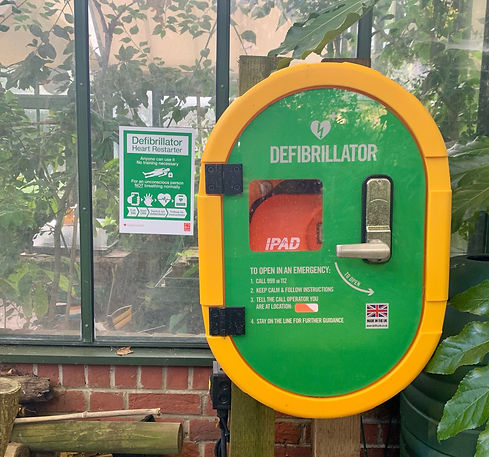The Planting
After the garden was laid out by Thomas Cubitt in the 1830s, it was planted with 25 London Plane trees which were invaluable in helping to clear the pollution resulting from the industrial revolution, and also with common lilacs, Syringa vulgaris and Aucuba japonica. Some of this original planting is still present in the garden today, but overall, the planting was fairly mundane and much damaged during the war years, and the soil was degraded due to neglect.
After Roger Phillips took over the management of the Garden in 1981, he spent years improving the soil with the few resources available at the time. In fact, to keep costs down, he initially mulched all the flowerbeds with spent hops from the local brewery, which helped replenish the impoverished soil. At the same time, he began growing many shade-tolerant plants, such as camellias and ferns, experimenting with what would grow in the dry shade.
The garden changed dramatically following the Great Storm of 1987 which caused much damage throughout the garden due to the loss of seven, mature London Plane trees, amongst other plants. These large trees were replaced with more exotic lower canopy ones, including the various ornamental cherries, the Foxglove Tree, Paulownia tomentosa, the Handkerchief Tree, Davidia involucrata, and the Indian Bean Tree, Catalpa bignonioides, to name a few.
The Garden also supports many tender plants from the southern hemisphere, including Manuka, Leptospermum scoparium; Kaka beak, Cleanthus puniceus; and Bird of Paradise, Erythrostemon gilesii, to name a few examples.
The Eccleston Square Garden can be visited in May on the National Garden Scheme Open day and in June during the London Open Gardens Weekend run by the London Gardens Trust. Outside these times special requests to view Eccleston Square Garden should be made to

Camellias
The Camellia collection we have in the garden today largely dates back to Roger’s first planting efforts in the early 1980s and now consists of over 60 mature species and cultivars, including some that have become rare and are no longer available in the horticultural trade. The camellias in the garden flower from late autumn to spring.
The consequent increase in light on the ground after the Great Storm (1987) also gave opportunities for new, more exciting planting below the canopy and so the Ceanothus and roses were put in, as well as other sun-loving shrubs and perennials.

Roses
Today, we have some 150 climbing and rambling rose specimens, as well as a wide variety of shrub roses, ranging from the rather tender Chinas and Teas to modern European roses. Many of our climbing and rambling roses have been grown to climb up trees, thus replicating what they would be doing naturally in the wild and this gives Eccleston Square Garden its wild, somewhat informal and horticulturally unique character.


Ceanothus
Eccleston Square Garden holds a National Collection of Ceanothus, which includes some 18 species and naturally occurring hybrids, and 58 cultivars. A number of these are now rare or threatened in cultivation. They can be seen to flower profusely around April and May but some come out as early as February and others as late as September.
Further information
The aim is to have year-round interest within the garden and so, over the years, there has been a subtle and steady increase in winter flowering plants, ranging from the common Helleborus to the more unusual forms of Witch hazel, Hamamelis x intermedia, and varieties of Oriental cherries Prunus spp.
Also worth mentioning is our Tree peony collection of which there are some 20 different forms growing throughout the garden.


Awards
London Garden Squares Competition
Large Private Garden Square
1st PRIZE in 2022, 2021, 2006
London Garden Squares Competition
Large Private Garden Square
2nd PRIZE in 2019, 2016, 2015, 2015, 2013, 2008,
London Garden Squares Competition
Large Private Garden Square
3rd PRIZE
Garden Square News - Best Garden Square Competition
1st PRIZE in 2008
Westminster In Bloom
Highly Commended in 2007
Defibrillator
There is a defibrillator behind the greenhouse. Please see the instructions on how to use it within the box.
